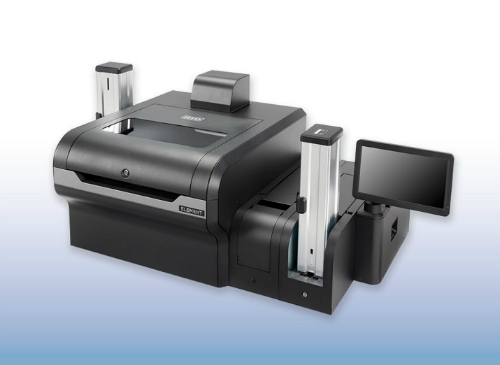Industrial inkjet printing involves using inkjet technology to print or deposit materials as part of the manufacturing process of a product on a production line. The idea is similar to that of a desktop inkjet printer, but the scale is vastly different in terms of machine size and speed, as well as the diversity of fluids that must be deposited. For labelling and coding the product, industrial inkjet printers are used. The rise of the worldwide packaging industry, combined with the faster operating speeds provided by industrial inkjet printers, is anticipated to drive the growth of industrial inkjet printers in packaging. Inkjet printers are used in industries to print dates, barcodes, logos, etc. on a variety of products.
Rising demand for industrial inkjet printers from flexible packaging and textile sector is expected to provide growth opportunities for the industrial inkjet printers market
Flexible packaging sector has been witnessing tremendous growth across the globe. It allows better transportation of the packaged goods and enables customizable designs and enhances the life span for the packaged goods. Industrial inkjet printers were initially designed to be used in the marking and coding applications in packaging. The inkjet printing on flexible packaging helps maintain the quality of imprinted images and enhances the overall graphic representation during the phases such as manufacturing, packaging, transportation, and the final use of the product. Various advancements in printing techniques, such as better ink formulation, improved resins deployment, and high-performance printing equipment, help inkjet printer manufacturers enhance the printer performance. These developments have enabled industrial inkjet printers to meet the performance standards associated with the flexible packaging materials. For instance, Marabu is involved in the production and supply of water-based inkjet inks. The inks are used in the printing on flexible packaging for food and beverages products as well as consumer goods, such as cardboard boxes, toys, and wallpapers. Further, these printers are now being utilized in various industries—such as the textile and healthcare industries. There have been several developments in textile printing techniques, from block printing to rotary screen printing machines, as well as in dry heat transfer printing. In this printing technique, an artwork is processed by a desktop and then printed directly on a fabric. The textile inkjet printer aids the manufacturer to print different designs, colors, and patterns on the same fabric with more operating speed, ranging up to 1,000 meters per minute. Thus, propelling demand for industrial inkjet printers during the forecast period.
The key players operating in the industrial inkjet printers market are Anser Coding; Beijing Hi-Pack Coding; Citronix; Control Print; Domino; Ebs Ink Jet Systeme; Hitachi; Iconotech; ITW Company; Kba-Metronic; Keyence; Kortho; Leibinger; Linx; Markem-Imaje; Matthews Marking Systems; Squid Ink Manufacturing; United Barcode Systems; Videojet; Weber Marking; and Zanasi among others. Companies in this market have been continuously focusing on strategies such as product developments, plant expansions, and mergers and acquisitions to expand their footprint worldwide and fulfill the growing demand of the market.



